IBM Beam Spring: The Ultimate Retro Keyboard
Follow articleHow do you feel about this article? Help us to provide better content for you.
Thank you! Your feedback has been received.
There was a problem submitting your feedback, please try again later.
What do you think of this article?
Vintage mainframe terminal keyboard is the holy grail for collectors.
Before the relatively silent rubber dome and chiclet keyboards of today, were the famously clicky IBM Model F and Model M keyboards from decades past, which continue to be favoured by many programmers and keyboard enthusiasts today, with companies specialising in new switches and keyboard designs which attempt to recreate their distinctive sound and much loved positive action.
However, the buckling spring design of the Model F and Model M was in fact an economy and the story started with its even grander forebear, the beam spring keyboard.
Beam spring?
Like later buckling spring keyboards, beam spring switches work on capacitive sensing. However, as the name suggests, rather than the action being based around a buckling spring, a beam spring is employed instead.
Above we can see the metal beam inside the module and this is attached to the switch plunger.
The fly plate pictured above would normally be attached to the beam spring at each end. Then as the plunger is depressed and the activating force is reached, the beam flips and inverts, lifting the fly plate off the circuit board. This is the opposite action of a buckling spring mechanism, where force is applied, the spring buckles and a “hammer” is pushed onto sensing plates.
Here we can see the beam spring fly plate located in place, inside the switch module.
The result is a switch mechanism with a particularly positive action and satisfying travel, while requiring just the right amount of force to activate it. The downside being that it takes up much more room and is more expensive to manufacture, hence the subsequent move to using a buckling spring mechanism with the better-known iconic keyboards, IBM Model F and Model M.
IBM 3278 Terminal Keyboard
The IBM 3278 is an early terminal from the 3270 Information Display System family, which was developed for use with IBM mainframe computers. IBM 3270 is a novel block-oriented system, where clusters of terminals are connected via coax to “establishment controllers”, which are in turn either connected to a local mainframe via a channel interface, or remotely via a communications link. To find out more see the article, A Fresh Look at IBM 3270 Information Display System.
The early 3270 terminals and their keyboards are incredibly well constructed, being fabricated from die-cast and sheet metal, have quite a bit of weight to them and employ beam spring switches.
The 3278 terminal keyboard is a pleasing wedge shape and we can see how tall it has to be in order to accommodate the beam spring switch modules, together with the driving electronics.
The keycaps are also quite tall, of a notably solid construction and with a concave profile.
Being a terminal keyboard there is a selection of interesting keys.
In the wrist rest position, there is a compartment which opens up to reveal a problem-determination guide for the terminal.
Flipping the keyboard over we can see that it has a solid die-cast aluminium base with four rubber feet, with the top half of the keyboard enclosure also being constructed from die-cast aluminium.
On the base, we can also find a 1977 date mark — coming up for 50 years ago!
Internal
With the top half of the keyboard enclosure removed, we can see a tired-looking piece of protective material.
Side-on we can see the switch modules with the springs which return travel and just about make out the remnants of the disintegrating blue protective material which covered each of these.
A separate controller/interface PCB is attached to the switch matrix board via an edge connector.
It wouldn’t be classic IBM computing technology without their Solid Logic Technology (SLT) and here we can see one such device in its distinctive metal can packaging. SLT was IBM’s method of packaging hybrid circuitry, comprised of silk-screened resistors on a ceramic wafer, with individual transistors and diodes added, and then encapsulated.
Typing action
So what does a beam spring keyboard behave and sound like? The video above provides a quick demo of the travel and sound produced by the switch modules.
However, this is not the full story.
There is also a solenoid inside the enclosure, but since the keyboard is not powered up, this was not being activated — and these are seemingly particularly loud! But why? The teletypewriters, paper terminals and card punches which preceded such early “glass teletypes” would have been very noisy indeed, hence it was decided that terminals like the IBM 3278 would need to provide much more positive feedback than simply that provided by a clicky switch module.
Planned use
Keyboard enthusiasts convert beam spring keyboards for use with modern computers. This can be done using a board such as the “xwhatsit” capacitive sense controller pictured above, which connects to the keyboard PCB, replacing the original controller and providing a USB interface.
However, it is hoped to use the keyboard with an actual IBM 3278 terminal and two have been acquired, albeit it both in a pretty sorry state. Also, there is only one power supply available, due to a courier having lost a shipment. The PSU can be seen sat on top of the terminals and is an old-fashioned linear design with a very heavy mains transformer.
Side-on we can see that, much like its keyboard, the 3278 terminal has a very pleasing retro aesthetic.
The idea will be to refurbish the keyboard first, using an xwhatsit controller to verify that the switch modules are all functioning correctly. Then start work on getting a terminal working, with the hope that at least one functioning IBM 3278 can be built from the two.
Final words
In this article, we’ve taken a look at the lesser-known beam spring keyboard and the construction of a design which is coming up for half a century old. We’ll hopefully cover the refurbishment of the keyboard in a future article and, if we are lucky, getting an actual 3278 terminal up and running.


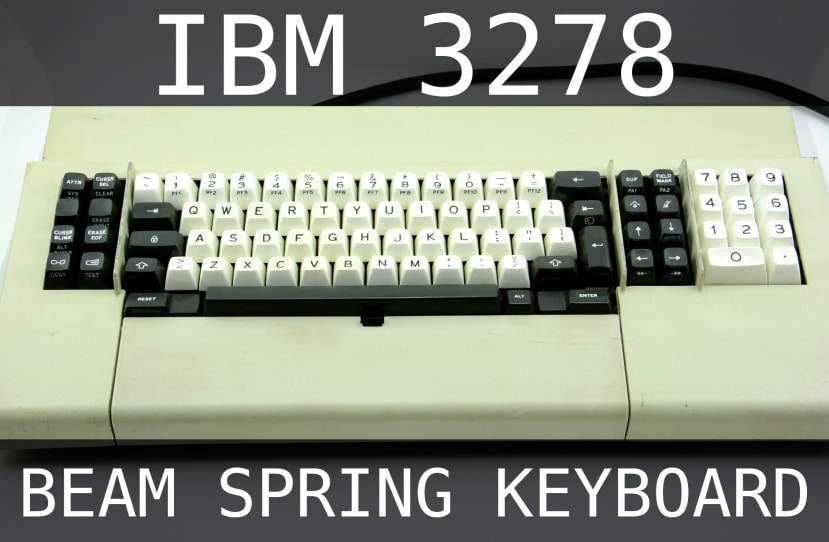



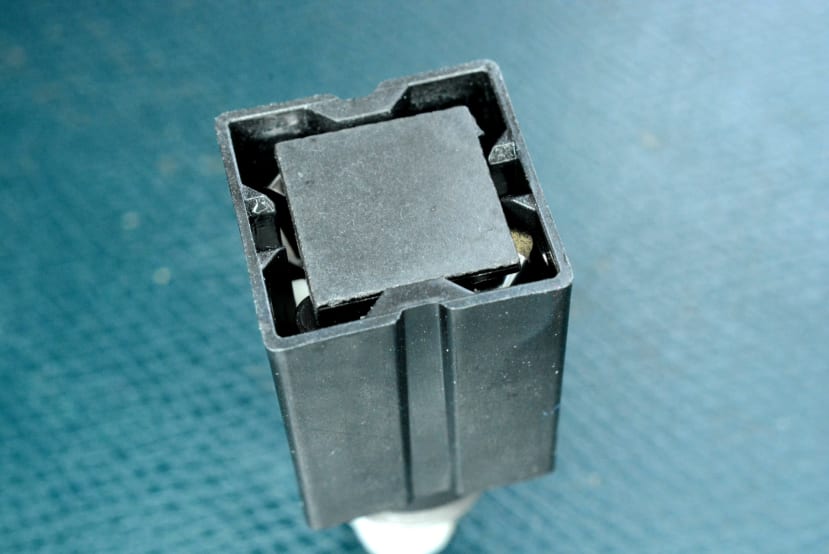







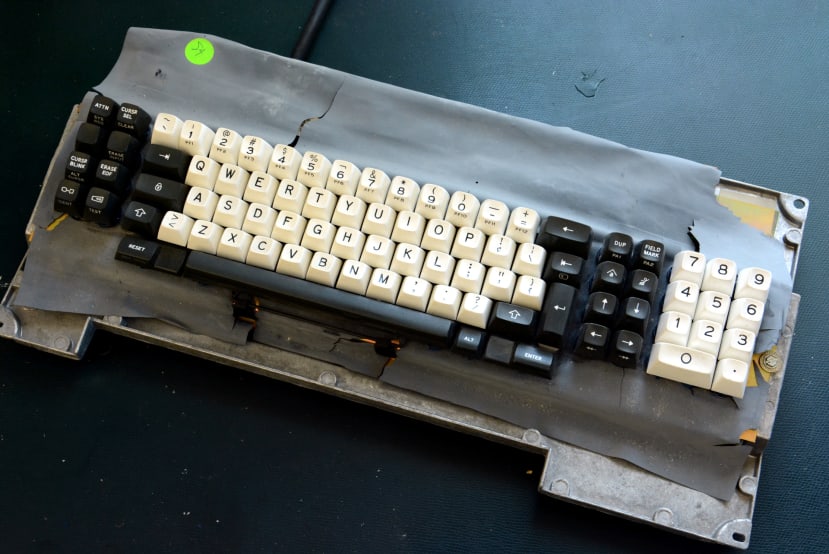
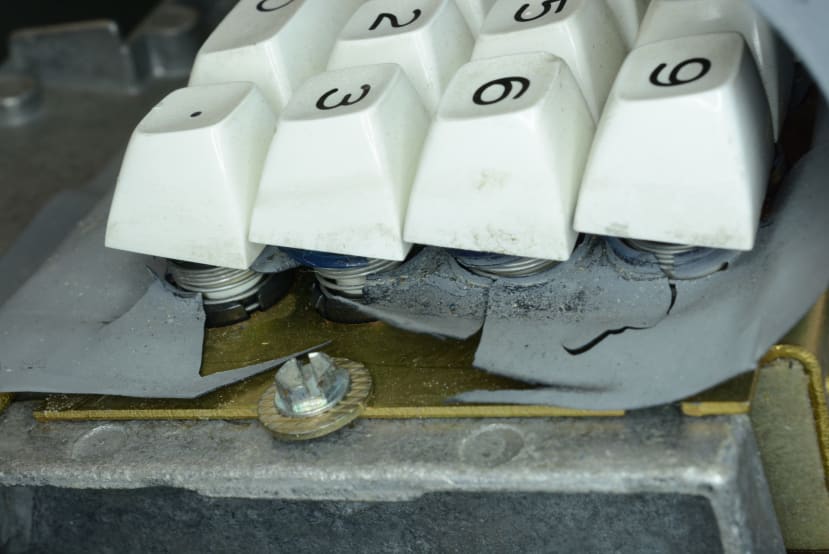



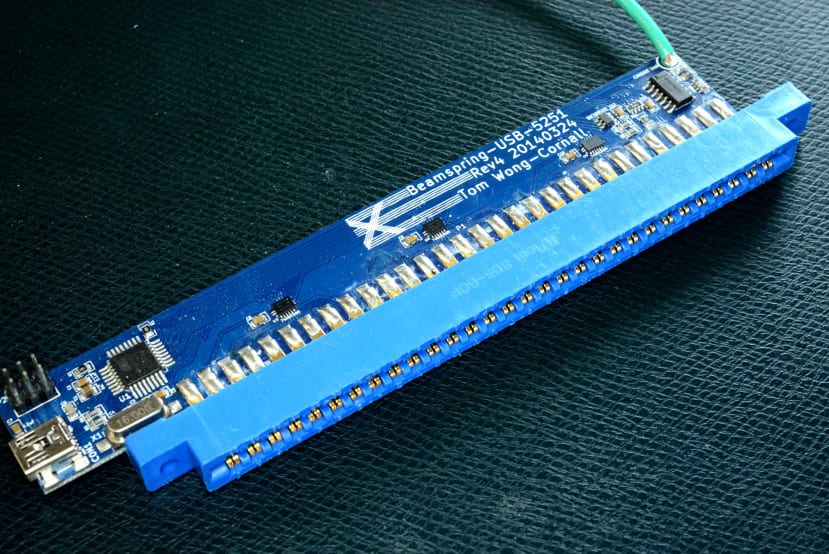

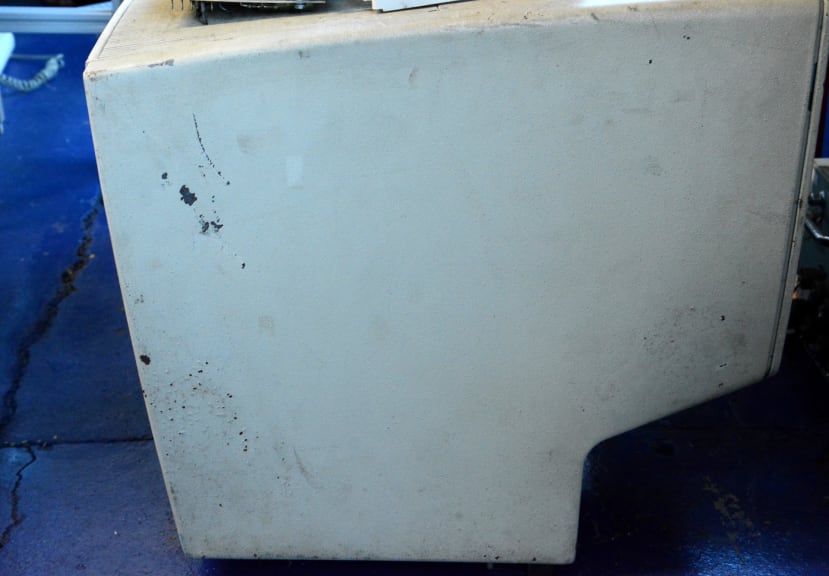
Comments